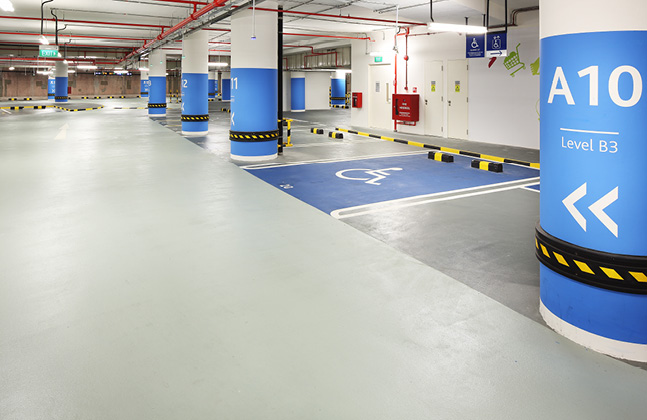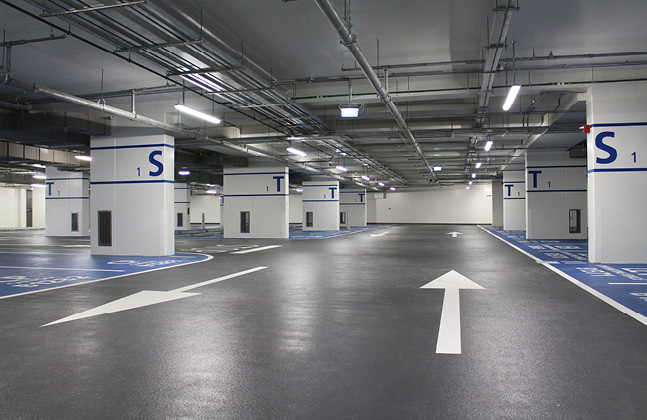1. Moisture proofing
Car parks are subject to humidity, rain and chemical spillage. Without adequate protection, surfaces are at risk of water ingress and ponding, which could have disastrous consequences to the integrity of the floor.
In humid basement environments, the different moisture levels above and below the concrete flooring results in moisture vapour transmissions putting pressure on the underside of the deck coat, leading to possible blistering and delamination of the surface.
A damp proof membrane applied on the negative side of the concrete basement slab, prior to the installation of the floor finish, prevents the accumulation of moisture vapour and ensures that the deck coating does not become compromised. In renovation projects where there is either no underlying damp-proof membrane or a damaged one, it may be necessary to install a positive side damp proof membrane.
To maintain the vibrancy and strength of a surface deck coating when it is exposed to rain and commonplace car park substances such as battery acids, petrol and brake fluids, it is wise to use a water-based resin and/or a moisture tolerant primer. The cross-link density of a water-based resin allows water vapour to pass through the material without putting the system at risk of de-bonding from the substrate.
2. A Flexible Floor Coating System
Due to the design of a multi-storey car park comprising large clear spans with few supporting columns, when supporting sustained traffic the structure becomes susceptible to movement and flexing. The continuous vibrations caused by the traffic puts the entire structure at risk of dynamic loading where vibrations travel throughout the joints and frames of the structure and the decks.
To counter-act this, flexible, crack-bridging polyurethanes should be used within deck coatings, allowing the flooring to become more trafficable and ‘move’ with the structure, eliminating the risk of cracks and potholes appearing within the deck. Although high in mechanical strength and chemical resistance, epoxy resins do not offer the same flexibility as a polyurethane system.
3. Demarcation
Coloured line marking products can be installed in conjunction with resin-based solutions to enhance the flow of vehicular and pedestrian traffic around the car park.
Brightly coloured, contrasting resins can be used to mark out bays, walkways and exits as well as providing instructional signage for traffic control, eliminating unimpeded movement throughout the structure and allowing easier access to bays whilst helping to create an all-round safer environment.
Colourful and vibrant car parks with light-reflective decks also help to make the right first impression at the first point of call for your business.







